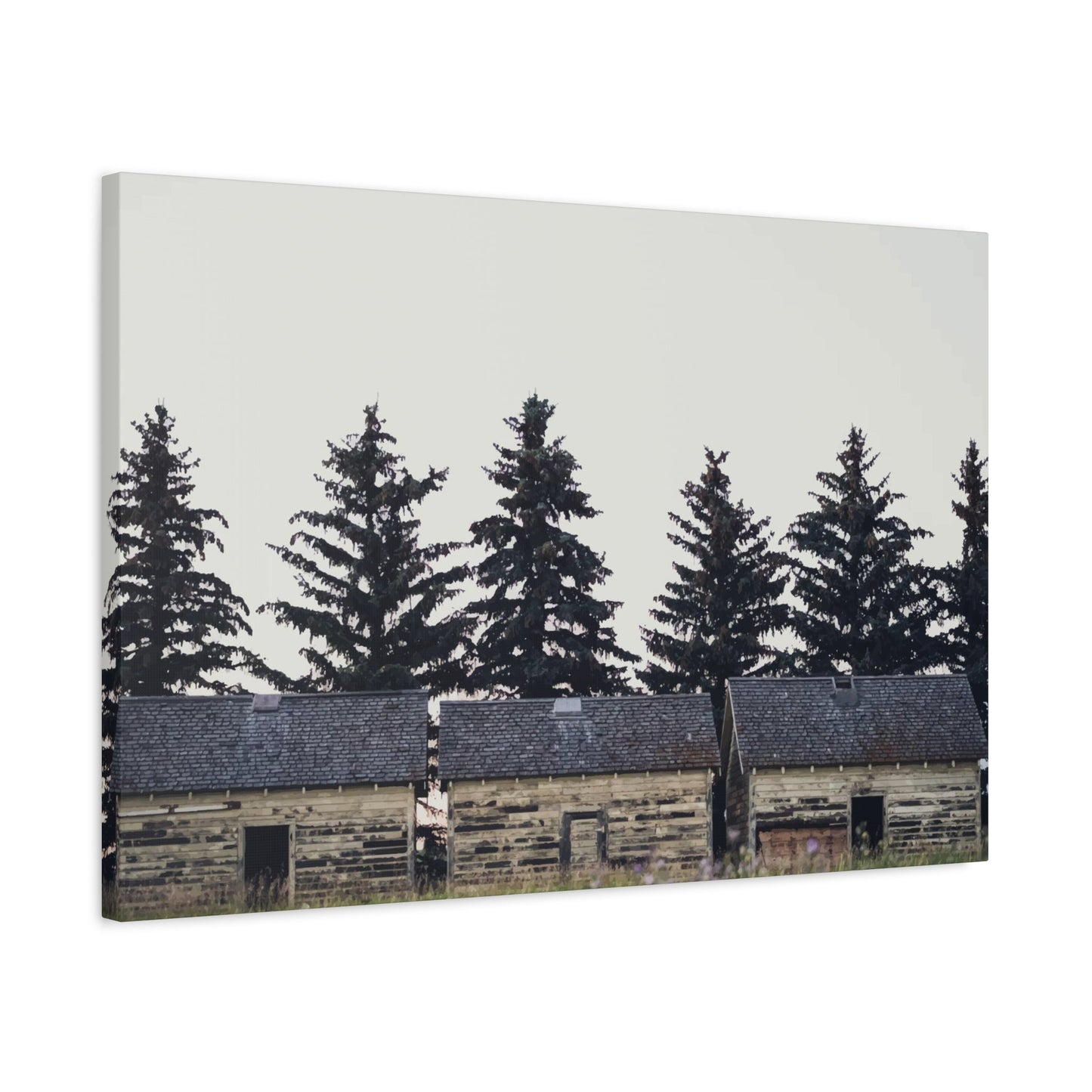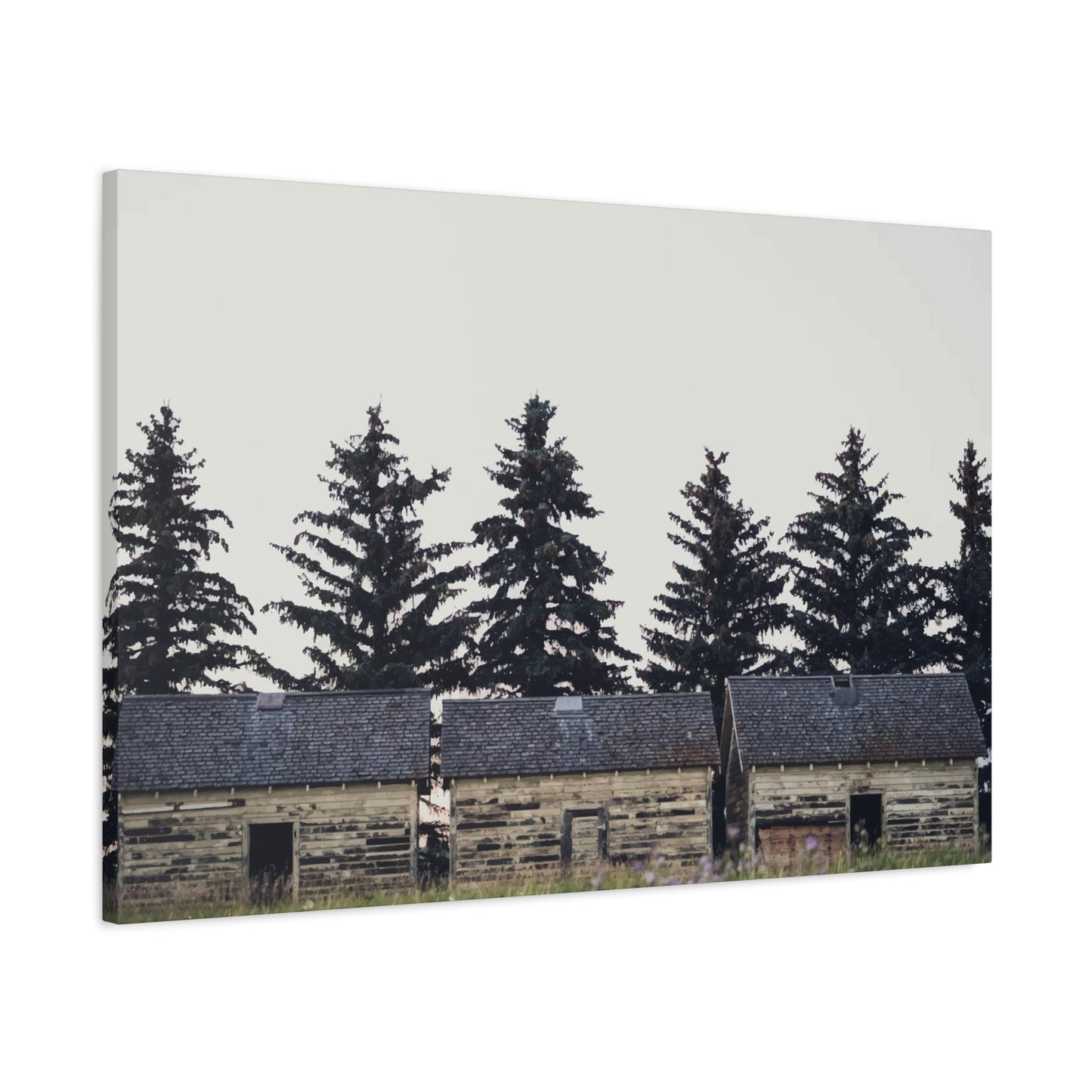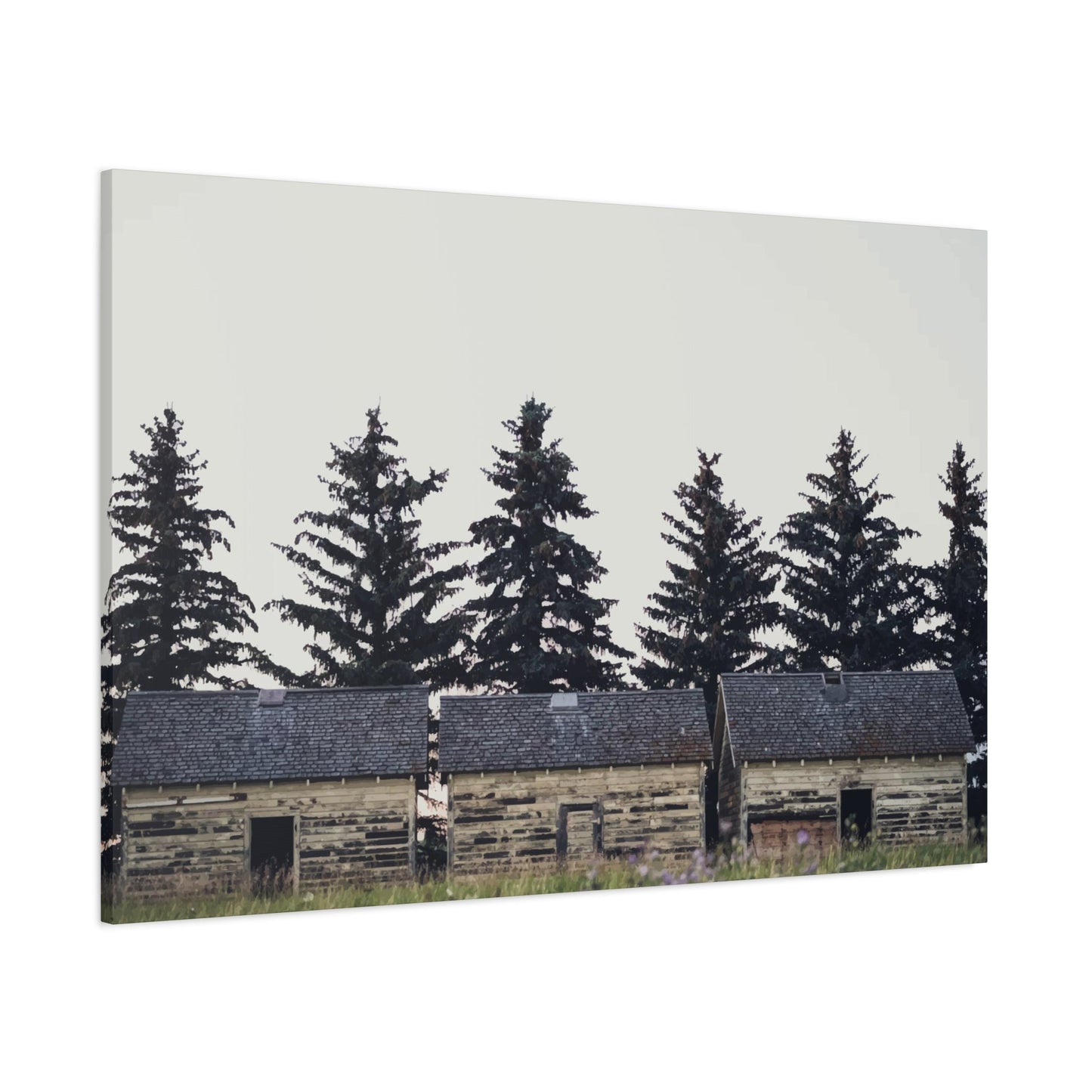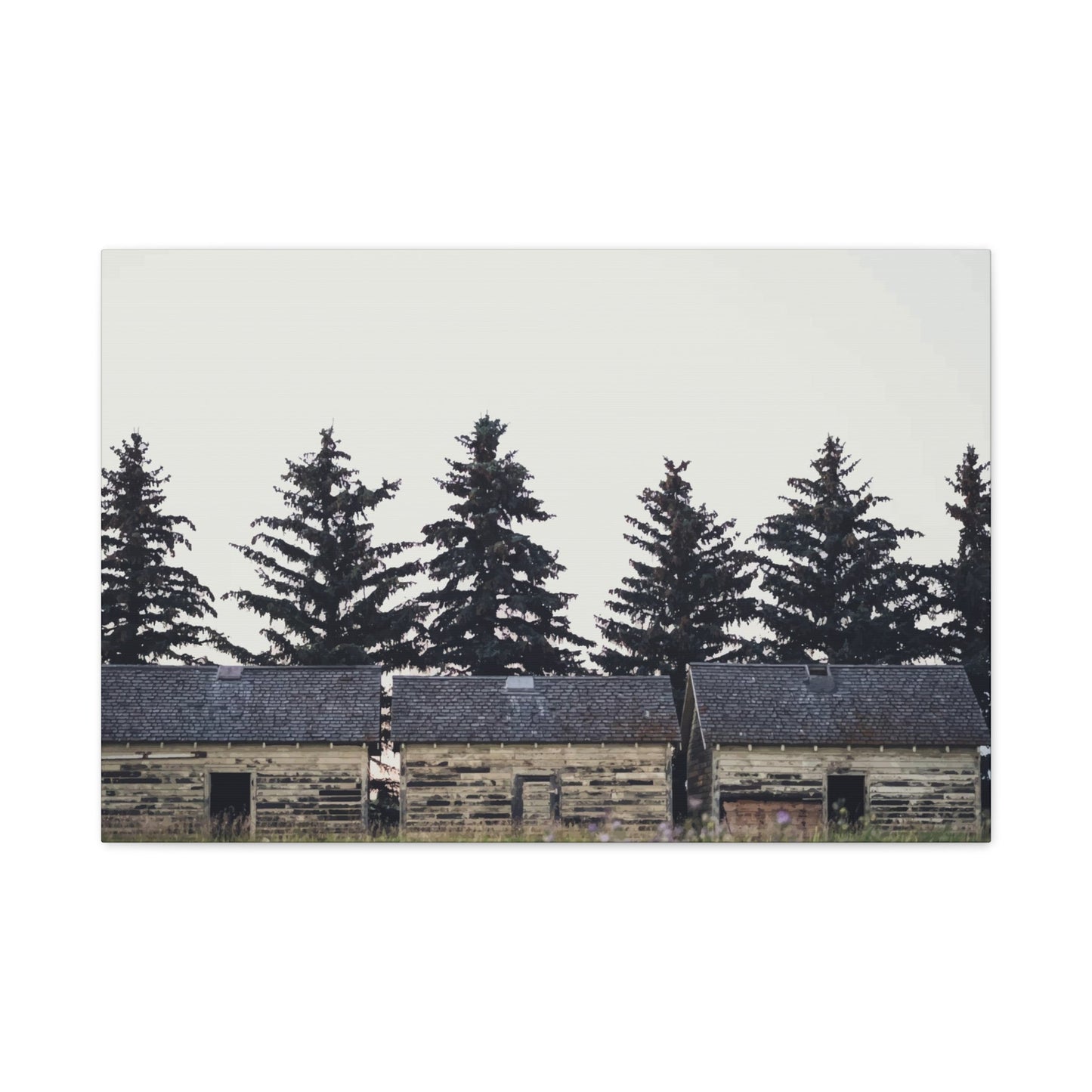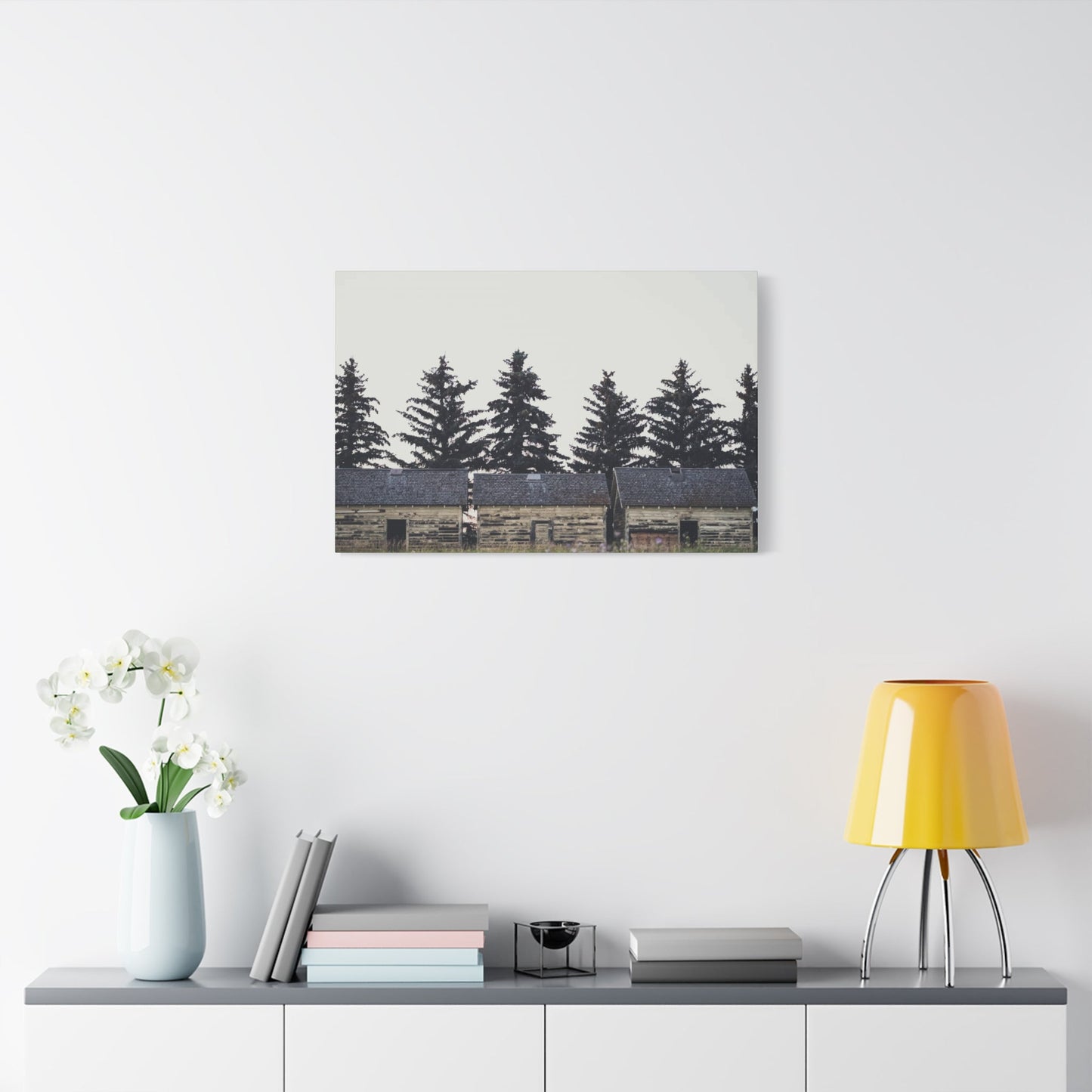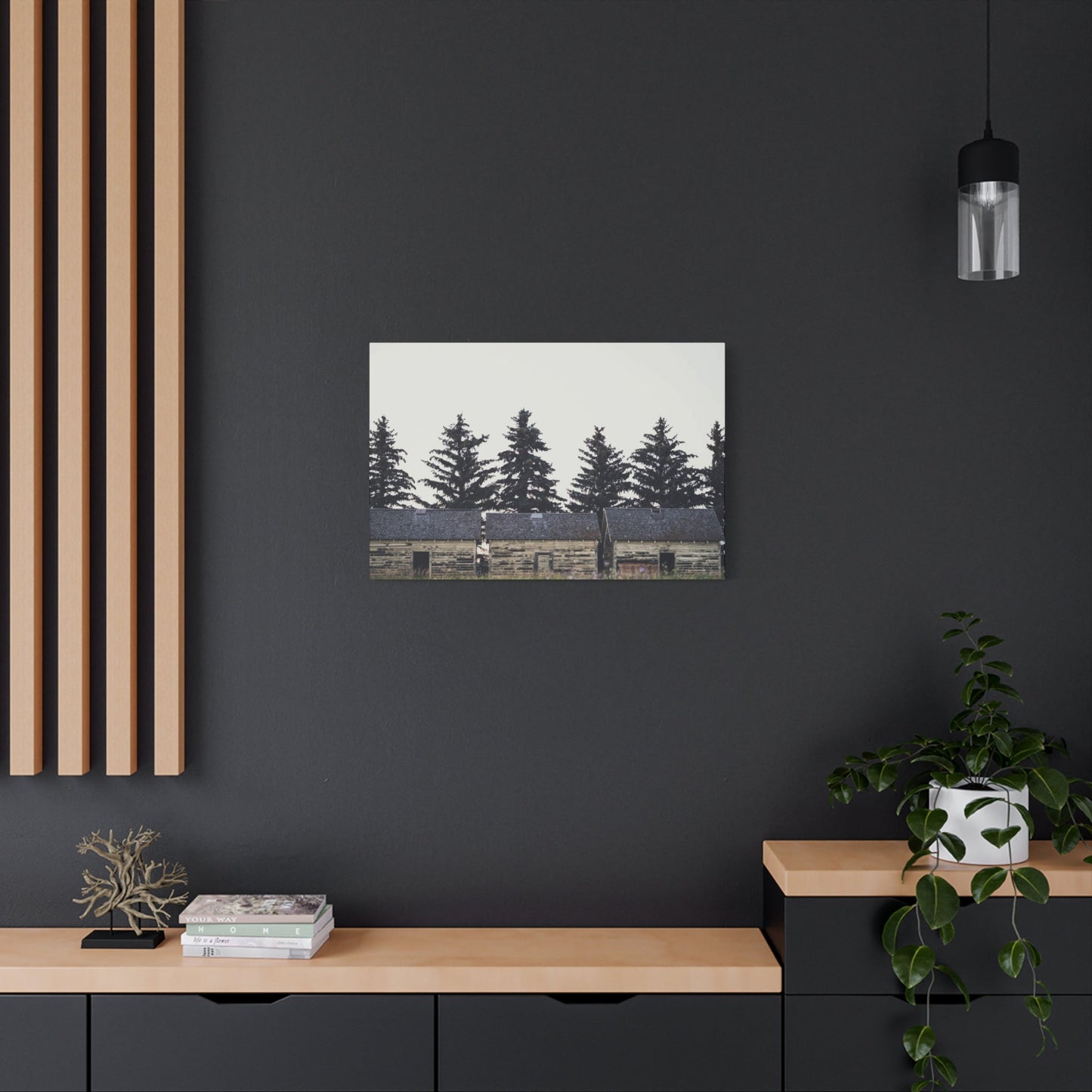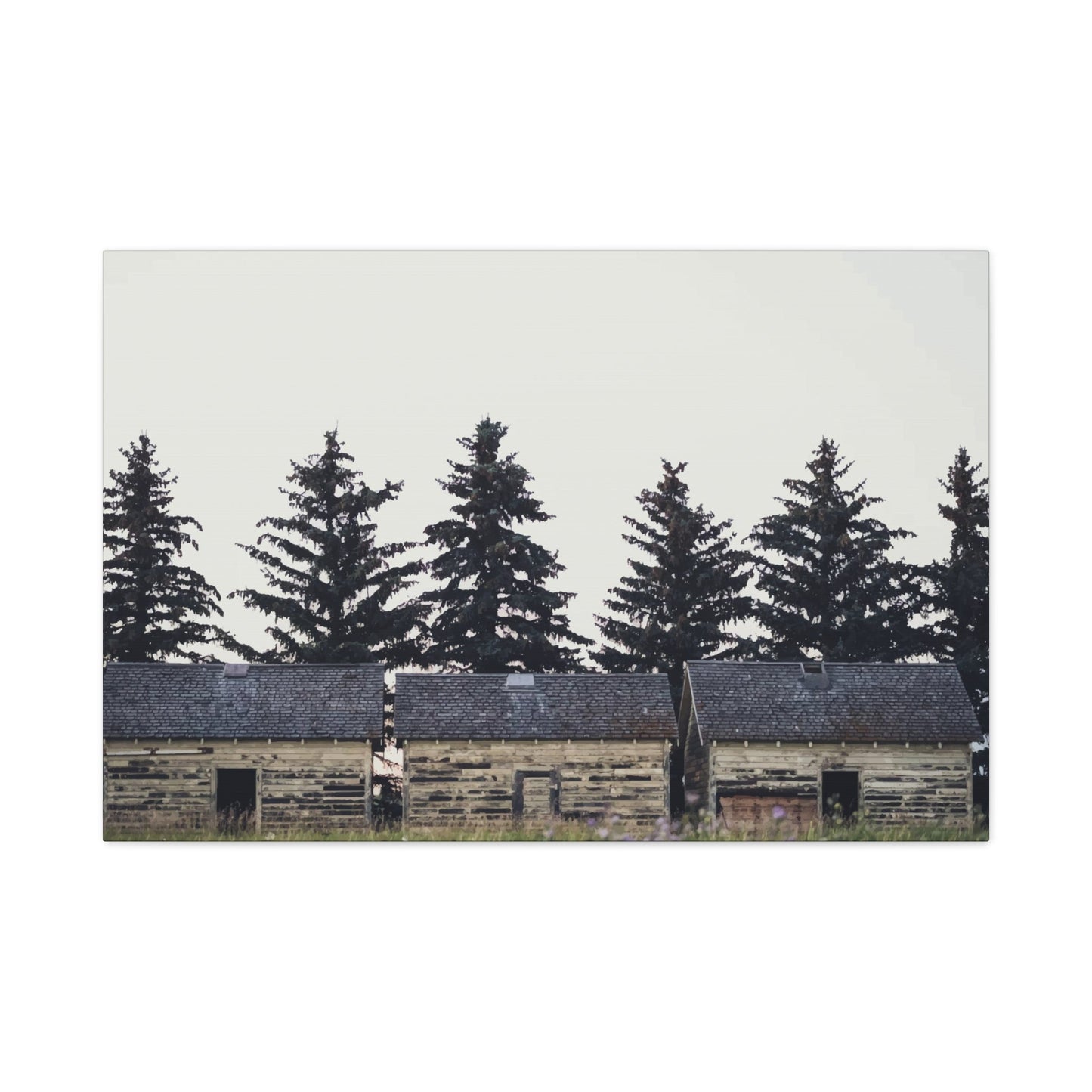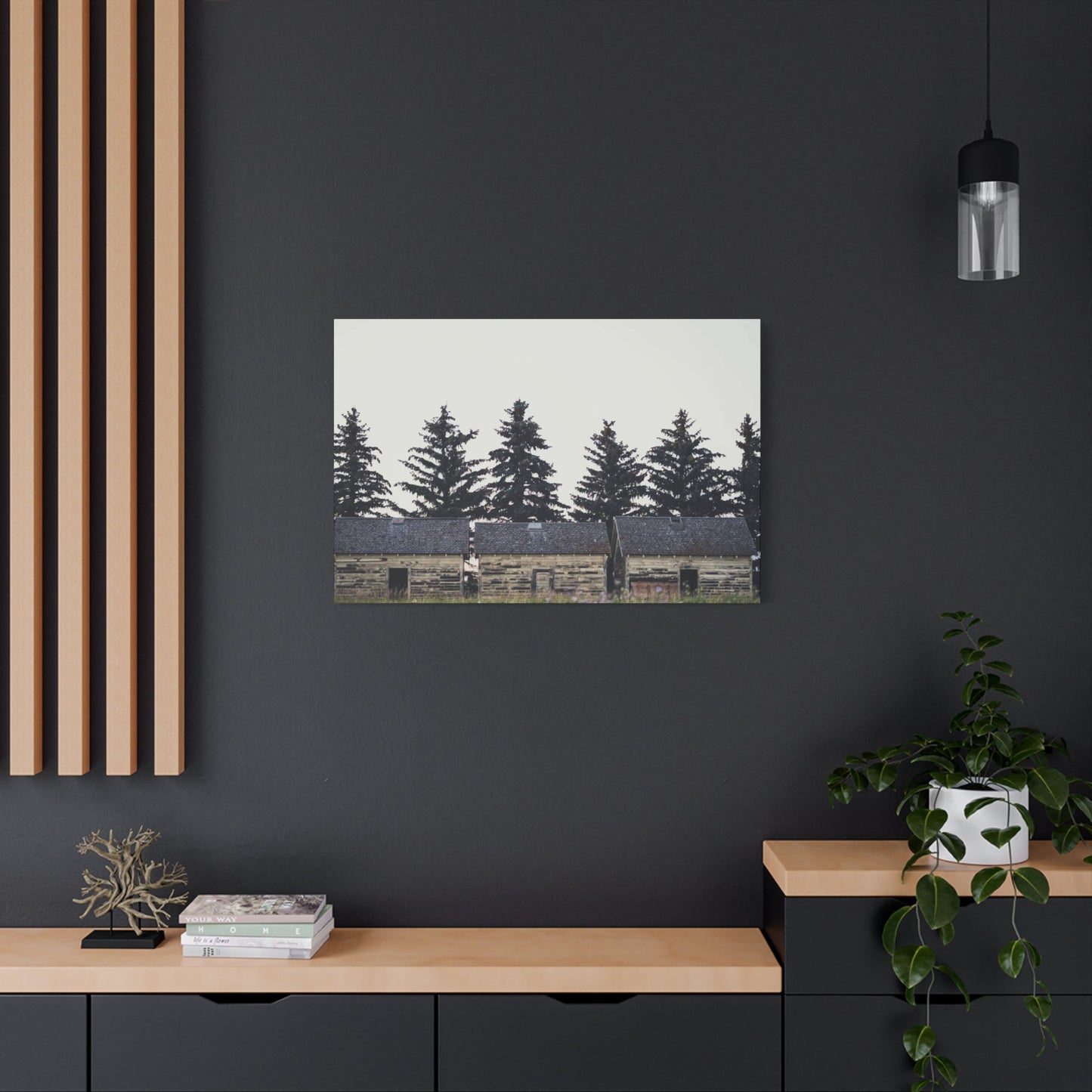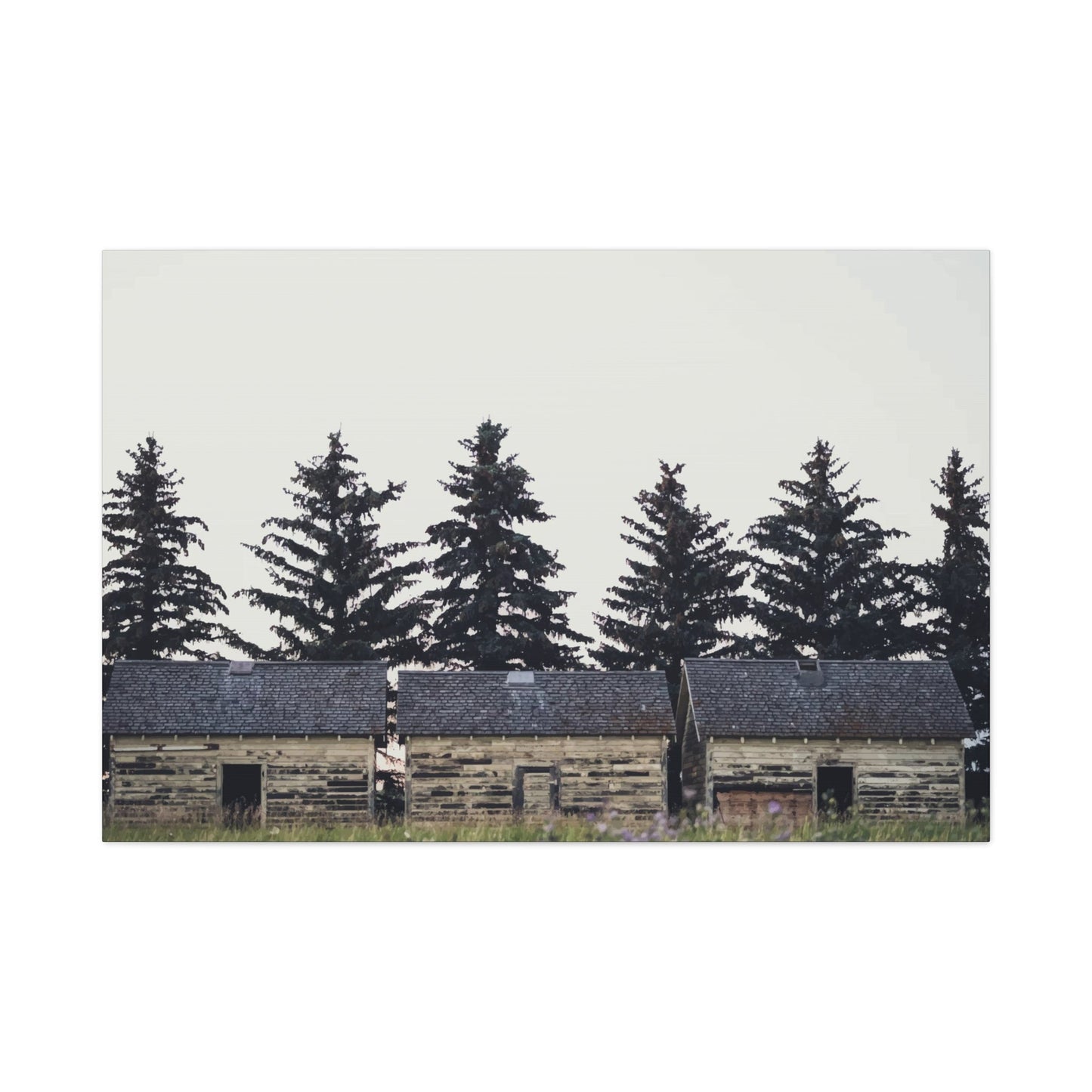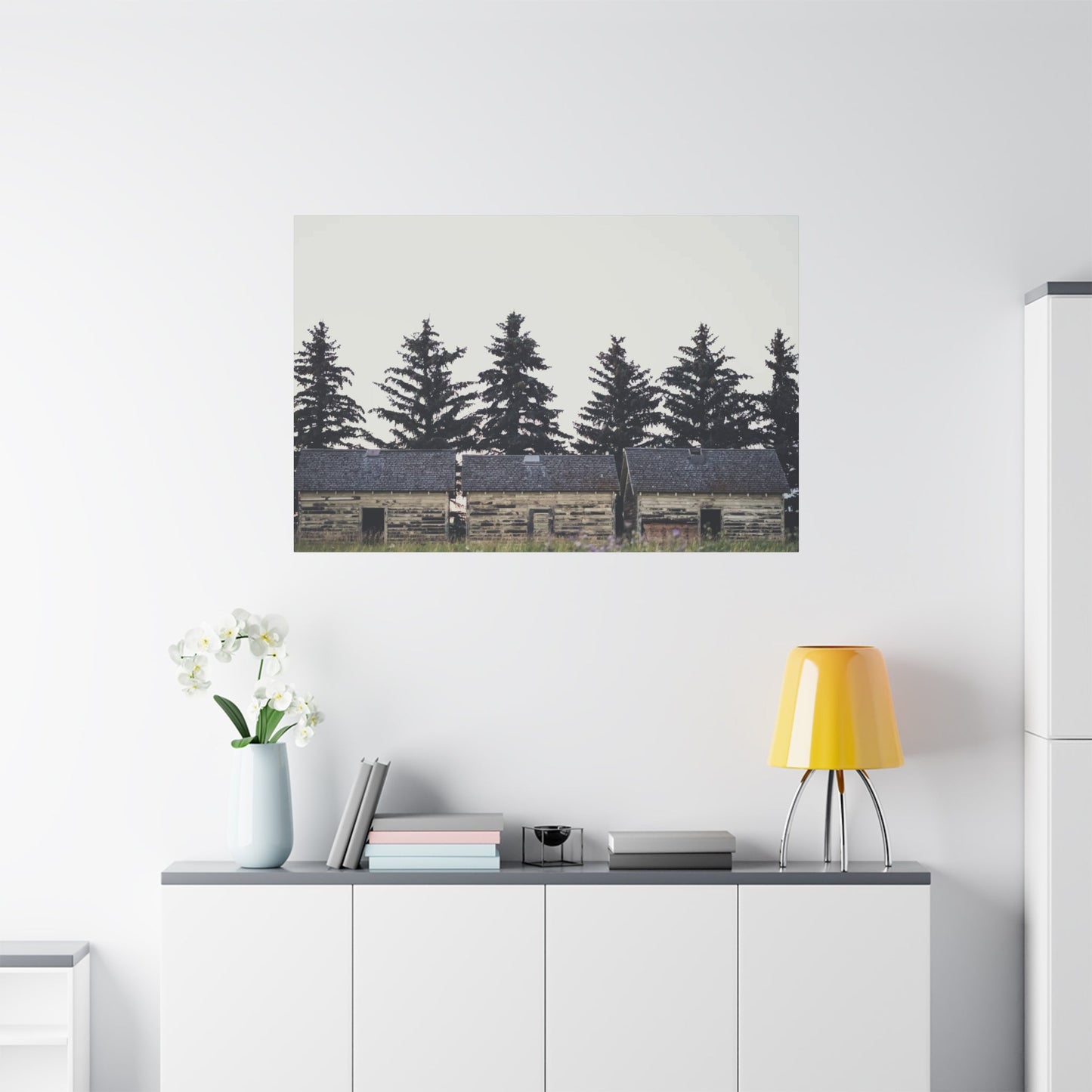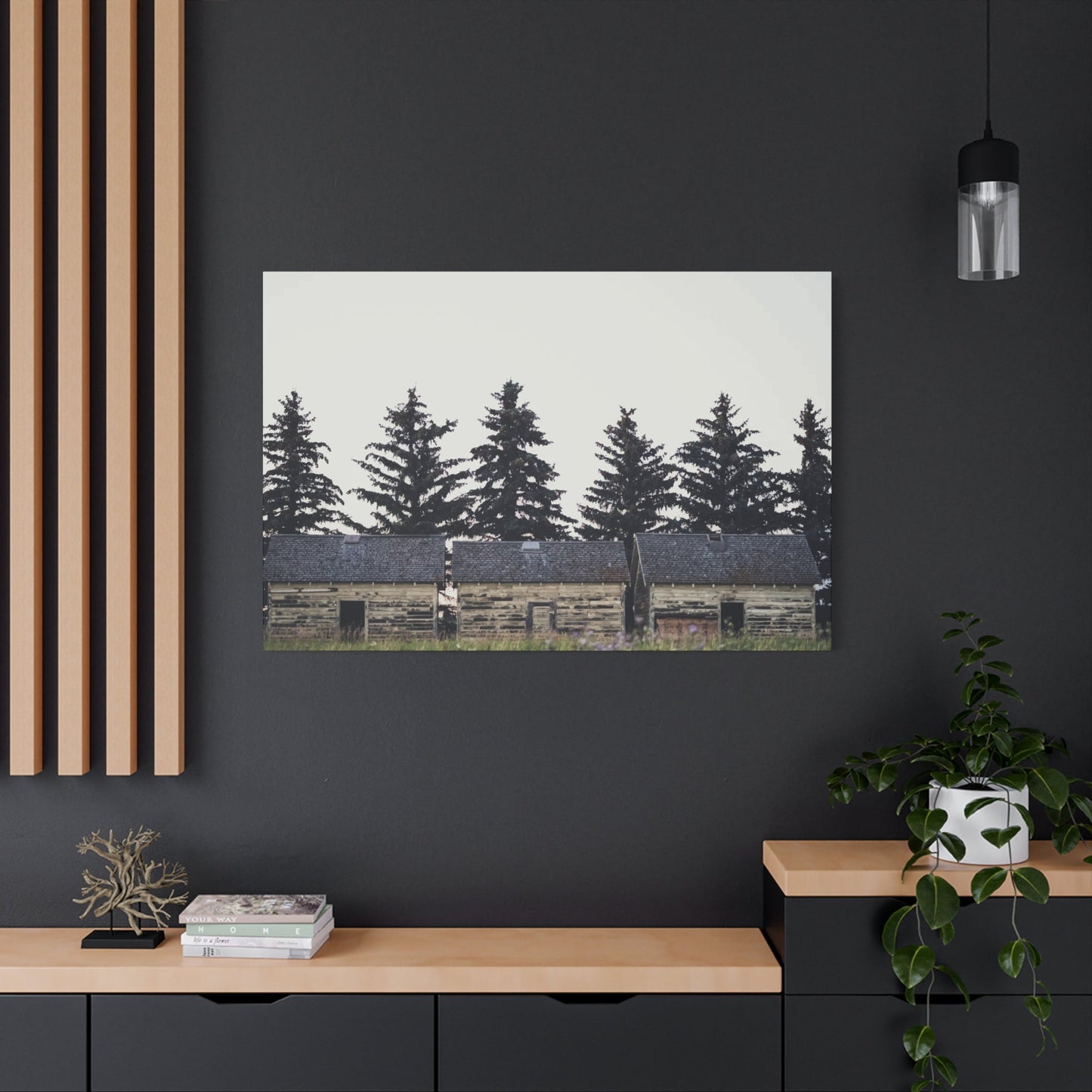Embracing Timeless Charm: Traditional Rustic Wall Art for Country Living Spaces
The enduring allure of traditional rustic wall art lies in its remarkable ability to transform ordinary living spaces into warm, inviting sanctuaries that celebrate the beauty of simpler times. This artistic style draws inspiration from pastoral life, natural elements, and the honest craftsmanship of bygone eras, creating visual narratives that resonate deeply with those seeking authenticity in their home environments. The combination of time-honored painting techniques with rural themes produces artwork that speaks to our collective longing for connection with nature and heritage. As contemporary lifestyles become increasingly fast-paced and digital, the grounded, earthy quality of this artistic approach offers a visual respite that soothes the soul while enriching interior spaces with character and depth. The popularity of this aesthetic continues to grow as homeowners recognize the value of surrounding themselves with imagery that reflects enduring values, natural beauty, and the craftsmanship traditions that have been passed down through generations.
Countryside Scenery Depicted Through Classical Painting Methods
The representation of rural vistas using established artistic techniques creates captivating focal points that anchor any room with their serene presence. These compositions typically showcase rolling hills, weathered fences, meandering streams, and distant farmhouses that evoke memories of countryside excursions and simpler living. Artists working in this tradition employ classical approaches such as careful attention to atmospheric perspective, where distant elements appear softer and lighter than foreground details, creating convincing depth within the composition. The brushwork demonstrates mastery of traditional methods, with visible strokes that add texture and movement to cloud formations, foliage, and water features. These paintings often capture specific lighting conditions such as the golden hour before sunset or the crisp clarity of early morning, which bathe the landscape in warm, nostalgic illumination that enhances the emotional impact of the scene.
The color harmonies found in these works reflect the authentic hues observed in natural settings, with earth tones forming the foundation upon which brighter accents are carefully placed. Ochres, siennas, and umber shades dominate the palette, occasionally punctuated by the deep greens of conifers or the weathered red of an old barn. This restrained approach to color creates cohesion across different pieces, allowing collectors to build harmonious groupings that work together rather than competing for attention. The compositions themselves follow time-tested principles of balance and arrangement, often employing the rule of thirds to position key elements where they naturally draw the eye. Winding paths or streams frequently serve as visual devices that lead viewers into the scene, creating a sense of invitation and exploration. These artistic choices result in works that feel both familiar and continually engaging, rewarding repeated viewing with new details that emerge over time.
When displayed in residential settings, these landscape interpretations bring the calming influence of nature indoors, creating connections to the outdoor world even in urban apartments far removed from actual countryside. The scale of these pieces matters significantly, with larger works making bold statements above sofas or in dining areas, while smaller interpretations work beautifully in collections or more intimate spaces. The framing choices greatly influence how these paintings integrate with surrounding decor, with traditional wooden frames in natural finishes typically complementing rather than competing with the artwork itself. Placement considerations include both available light and viewing distance, as these factors affect how colors appear and how much detail viewers can appreciate. These rural scenes possess remarkable versatility, enhancing everything from dedicated country-style interiors to more eclectic spaces that benefit from their grounding presence and visual warmth.
Timber Surrounds That Elevate Rural Artistic Expression
The selection of appropriate borders for country-inspired artwork significantly impacts its overall presentation and how effectively it integrates with surrounding interior elements. Natural timber encasements particularly complement this artistic style, as the organic material echoes the natural themes depicted within the artwork itself. The grain patterns, color variations, and textural qualities of different wood species each contribute distinct characteristics that can either harmonize with or provide pleasing contrast to the enclosed piece. Oak frames offer substantial presence with their pronounced grain and warm honey tones, creating a sense of permanence and tradition that suits larger landscape works. Walnut provides deeper, chocolate-brown hues that create sophisticated borders without overwhelming more delicate compositions. Pine selections deliver lighter, more casual aesthetics with their pale coloring and subtle grain, ideal for scenes depicting spring meadows or winter landscapes where the frame should not compete with softer palette choices within the artwork.
The finish treatment applied to wooden surrounds dramatically alters their final appearance and compatibility with various interior schemes. Natural oil finishes penetrate the wood fibers while allowing the authentic texture and color to show through, creating understated elegance that places focus squarely on the enclosed art. These treatments develop beautiful patinas over time, gradually deepening in tone and developing character that mirrors the aging process of well-loved furniture pieces. Stained finishes offer opportunities to adjust the wood tone toward specific color directions, whether warming it with amber-toned stains or cooling it slightly with gray-washed effects. The application technique matters considerably, with hand-rubbed stains creating more varied, organic results than spray applications. Some artisans deliberately apply stains unevenly, allowing the natural variations in wood density to create subtle tonal shifts that add visual interest to the frame itself.
Comfortable Mountain Retreat Atmosphere Through Classic Country Reproductions
Creating the welcoming ambiance associated with secluded woodland dwellings involves carefully curating visual elements that evoke warmth, shelter, and connection to the surrounding forest environment. Artistic reproductions depicting cozy interior scenes, snow-laden cabins nestled among towering pines, or peaceful woodland clearings establish this desired mood through their subject matter and execution style. These images tap into deeply held cultural associations between mountain retreats and restorative escape from daily pressures, offering viewers visual transportation to imagined sanctuaries. The most effective examples balance nostalgic appeal with artistic merit, avoiding clichéd representations in favor of compositions that demonstrate genuine observation and skillful rendering. Scenes showing cabin exteriors work particularly well in entryways or mudrooms, where they establish theme immediately upon entry, while interior scenes depicting crackling fireplaces or rustic furnishings enhance living areas where actual relaxation occurs.
The color schemes employed in these works typically emphasize warm earth tones punctuated by the cool blues and grays of mountain shadows and evening skies. This temperature contrast creates visual interest while maintaining the cohesive palette necessary for spaces where multiple pieces might be displayed together. Brown and amber tones dominate representations of log construction, with artists carefully depicting the varied hues present in weathered wood surfaces and the chinking materials that fill gaps between logs. When snow appears in compositions, its treatment reveals artistic skill, as convincing snow rendering requires understanding how this material reflects ambient light and develops subtle color shifts from blue-toned shadows to warmer highlights where sunlight strikes directly. The inclusion of smoke rising from chimneys, warm light glowing from windows, or wildlife tracks in fresh snow adds narrative elements that invite viewers to construct stories around the depicted scenes.
Classic Country Botanical Artwork for Inviting Interior Environments
Floral imagery interpreted through traditional artistic approaches brings natural beauty indoors while maintaining the authenticity and handcrafted quality that defines this aesthetic category. Unlike more formal botanical illustrations with their scientific precision, these interpretations embrace a looser, more painterly quality that captures the essence and vitality of garden flowers rather than documenting them with technical accuracy. Wildflower meadow scenes burst with color and movement, suggesting gentle breezes and the hum of pollinating insects, while contained arrangements in vintage vessels celebrate domestic traditions of bringing cuttings indoors. The appeal of these works extends beyond mere decoration, connecting viewers with agricultural cycles, seasonal changes, and the relationship between cultivated gardens and wild landscapes. Artists working in this vein often depict varieties with strong rural associations such as sunflowers, black-eyed susans, lavender, and peonies, species that thrive in country gardens and carry nostalgic resonance.
The rendering techniques employed in these floral subjects demonstrate mastery of observation and paint handling that creates convincing illusions of three-dimensional form and varied surface textures. Petals might show the delicate translucency characteristic of certain species, achieved through careful manipulation of paint opacity and strategic placement of highlights. Foliage receives equally thoughtful attention, with artists depicting the specific green values and leaf structures that identify different plant types. Background treatments typically remain subordinate to floral subjects, often consisting of softly suggested environments or atmospheric washes that prevent competing with the detailed flower rendering. This approach mirrors classical still life traditions while adapting them to suit more relaxed country aesthetics. Compositions range from tightly arranged bouquets that fill the picture plane with abundant blooms to more spacious arrangements that allow individual stems room to display their characteristic growth patterns.
Environmental Themes and Natural Patterns in Country-Style Wall Decorations
The incorporation of elements drawn directly from the natural world forms the conceptual foundation for much country-inspired artistic expression. These motifs extend beyond literal landscape representation to include stylized interpretations of leaves, branches, stones, water, and wildlife rendered in ways that emphasize their decorative potential while maintaining recognizable connection to their sources. This approach allows artists to create works ranging from nearly abstract pattern explorations to more figurative pieces that clearly depict specific natural features. The resulting diversity means that collectors can find pieces suitable for various interior contexts, from formal spaces requiring subtle sophistication to casual areas where more obvious natural references feel appropriate. Common recurring elements include leaf skeletons revealing intricate vein structures, cross-sections of tree trunks displaying growth rings, feather patterns showcasing the architectural complexity of avian plumage, and rock formations highlighting geological layering and mineral colorations.
The treatment of these natural motifs varies considerably depending on artistic intent and target aesthetic. Some artists employ highly realistic rendering that celebrates the incredible intricacy present in natural forms, essentially creating portraits of individual specimens that invite close examination and contemplation. This approach works particularly well for smaller-scale pieces intended for intimate viewing distances where details can be fully appreciated. Others adopt more stylized interpretations that simplify and abstract natural elements into rhythmic patterns and harmonious color relationships, creating works that function more decoratively while still maintaining clear connections to their inspirational sources. These pattern-based approaches often prove more versatile for coordinating with existing interior elements, as their reduced realism makes them less literal and therefore easier to integrate with various color schemes and furniture styles. A middle path between these extremes involves selective emphasis where certain elements receive detailed attention while others remain suggested, creating focal points within compositions that guide viewer attention while maintaining overall coherence.
Integrating Country Artwork with Agricultural Home Design Elements
The successful combination of rural artistic pieces with farmhouse-inspired interior design requires understanding the core principles that unite these aesthetic approaches while recognizing opportunities for creative variation that prevents spaces from becoming overly themed or predictable. Both traditions share fundamental values including authenticity, practicality, connection to agricultural heritage, and appreciation for honest materials displayed without excessive refinement. These shared foundations mean that country artwork naturally complements farmhouse environments when selections respect the unpretentious character that defines both. The key lies in achieving balance between sufficient thematic consistency to create cohesion and enough variation to maintain visual interest and personal expression. Spaces that rigidly adhere to narrow style definitions risk feeling more like stage sets than lived-in homes, while those that successfully blend these elements achieve character-rich environments that feel both intentional and organically accumulated over time.
Color coordination represents one crucial aspect of this integration process, with country artwork offering opportunities to either amplify dominant hues present in farmhouse interiors or introduce accent tones that provide contrast and prevent monotony. The neutral foundations typical of farmhouse design including whites, creams, grays, and natural wood tones create versatile backdrops that accommodate various artistic color palettes. Artwork featuring warm earth tones reinforces the cozy, grounded feeling central to both aesthetics, while pieces incorporating sage greens or dusty blues add refreshing variation without departing from the natural color families that unite the overall scheme. Black elements appearing in both farmhouse fixtures like light fittings and window frames and within artwork compositions create visual connections that tie disparate elements together. The deliberate repetition of specific accent colors across artwork, textiles, and decorative objects throughout a space creates rhythmic flow that guides the eye and generates subconscious feelings of intentionality and completeness.
Earth-Toned Color Schemes in Classic Country Artistic Compositions
The predominance of warm color palettes within traditional rural artwork directly reflects both the natural hues found in pastoral landscapes and the emotional qualities these colors evoke in viewers. Earth tones encompassing browns, tans, ochres, siennas, and umbers form the foundation of most country-inspired pieces, with these shades appearing in depictions of plowed fields, weathered wood structures, autumn foliage, and animal pelts. These warm neutrals create immediate feelings of stability, comfort, and connection to the land itself, as they mirror the colors of soil, clay, sand, and stone that literally ground us. Artists working within this tradition understand how to create remarkable variety and visual interest while remaining within these relatively constrained color families, demonstrating that limitations can inspire creativity rather than stifle it. The subtle variations between similar values and the strategic placement of lighter or darker passages create dimensional modeling and spatial depth without requiring dramatic color contrasts.
The supporting colors that accompany these earth-tone foundations typically maintain warmth while providing necessary variety and highlighting opportunities. Golden yellows suggest sunlight, ripened grain, and autumn leaves, adding luminosity to compositions while remaining harmonious with brown-based schemes. Rust and terracotta reds reference clay roof tiles, autumn sumac, and sunset skies, contributing richness without the intensity of pure red. Deep olive and moss greens represent vegetation in ways that feel more subdued and sophisticated than bright spring grass colors, maintaining the muted quality characteristic of this aesthetic. When cooler colors appear, they often serve specific purposes such as depicting sky, water, or shadow areas, with artists typically warming even these cooler passages slightly through adjacent warm tones or warm underpainting that glows through subsequent layers. The overall effect creates cohesive color harmony that feels natural and restful rather than jarring or demanding, making these works easy to live with over extended periods without visual fatigue.
The practical implications of these warm color palettes for interior design prove substantial, as earth-tone artwork integrates seamlessly with wood furniture, natural fiber textiles, and the neutral wall colors popular in contemporary residential design. Unlike artworks featuring bright or unusual color schemes that require careful coordination with surrounding elements, earth-tone pieces function as reliable neutral elements themselves that harmonize with most existing palettes. This versatility makes them particularly valuable for those uncertain about committing to bold color choices or for spaces that serve multiple functions requiring visual flexibility. The warmth inherent in these palettes contributes to the cozy, welcoming atmosphere many homeowners desire, particularly in living rooms, dens, and bedrooms where relaxation and comfort take priority over stimulation and energy. These colors also photograph beautifully in natural light conditions, an increasingly important consideration as homeowners share their spaces through social media platforms that reward warm, inviting aesthetics.
Manually Executed Country Scenes for Genuine Artistic Character
The distinction between hand-painted original works and mechanically reproduced prints significantly impacts both the visual qualities and emotional resonance of country-themed artwork. Manually executed pieces carry evidence of human touch in visible brushstrokes, subtle color mixing variations, and the inevitable minor irregularities that accompany handwork. These characteristics contribute authenticity and uniqueness that mass-produced alternatives cannot replicate, creating connections between viewers and the individual artists who created the works. The surface texture of hand-painted pieces adds dimensional interest absent from flat prints, with built-up paint layers catching light differently depending on viewing angle and creating physical depth that complements the illusionistic depth within the composition itself. For collectors who value craftsmanship and individual artistic expression, original works or high-quality hand-painted reproductions justify their higher costs through these distinctive qualities.
The technical execution visible in quality hand-painted works reveals artistic decision-making and skill development in ways that provide additional layers of viewing interest beyond subject matter alone. Close examination might reveal how an artist built up foliage masses through multiple layers of varied greens applied in different directions, or how sky gradations were achieved through careful wet-blending of adjacent colors. These technical observations need not require specialized knowledge to appreciate, as most viewers intuitively recognize and respond to the evidence of mastery and care invested in artwork creation. The slight variations in brushstroke pressure, the places where one color was dragged through another while still wet, and the decisive strokes that suggest details rather than laboriously rendering them all contribute to the vitality and spontaneity that characterize successful paintings. Even works depicting quiet, peaceful subjects carry the energy of their creation, with this paradox contributing to their enduring appeal.
The display and care of hand-painted pieces require some additional considerations compared to standard prints, though these demands remain modest for most collectors. Avoiding direct sunlight prevents fading of pigments over time, particularly important for works executed with less lightfast student-grade materials rather than professional artist paints. Temperature and humidity extremes can affect both paint layers and supporting surfaces like canvas or wood panels, suggesting the wisdom of avoiding placement directly above heating vents or in damp basement spaces. The investment in appropriate framing with UV-protective glazing when glass is used helps preserve colors and prevents environmental damage. These preservation efforts ensure that hand-painted pieces can provide enjoyment for decades or even generations, potentially appreciating in value as the original artist's reputation grows or as appreciation for handcrafted items continues increasing in reaction to mass production culture. The emotional satisfaction of owning unique artistic expressions created through skilled manual work adds value beyond mere decoration, contributing to the growing maker movement that celebrates individual creativity and traditional craftsmanship skills.
Pairing Natural Stone Surfaces with Country Wall Decorations
The incorporation of stone elements into interior spaces creates material richness and textural interest that complements country-themed artwork through shared natural origins and authentic, unprocessed character. Stone appears in residential settings through various applications including fireplace surrounds, accent walls, backsplashes, and flooring, with different stone types contributing distinct aesthetic qualities. Roughly textured fieldstone creates casual, organic impressions suitable for relaxed country environments, while more refined slate or limestone offers subtle sophistication that elevates rustic themes toward refined territory. The color variations within individual stones and across broader installations provide visual complexity that prevents monotony while maintaining neutral foundations that accommodate artistic additions. The inherent permanence and weight of stone construction suggests stability and enduring quality that aligns with country aesthetic values emphasizing lasting craftsmanship over temporary trends.
The relationship between stone surfaces and displayed artwork requires consideration of visual weight, color interaction, and textural balance to achieve successful integration. Heavily textured stone installations already provide substantial visual interest, suggesting that accompanying artwork might work best with simpler compositions and less busy details that would compete with the complex stone patterns. Alternatively, artwork featuring stone walls, rock formations, or geological subjects creates material echoes that reinforce natural themes through repeated references. The color relationships between stone and artwork matter significantly, with warm-toned stones like sandstone and limestone harmonizing naturally with earth-tone paintings while cooler gray stones suggest artwork incorporating similar blue-gray values for cohesion. The matte, light-absorbing quality of stone surfaces contrasts with framed artwork protected behind reflective glass, creating textural variety that enriches the overall visual experience through diverse surface characteristics.
The practical considerations for hanging artwork above or adjacent to stone installations include proper mounting hardware selection and careful placement to avoid damage to either element. Stone walls may require specialized mounting systems designed for masonry rather than standard drywall hanging methods, with appropriate anchors essential for secure installation. The uneven surface of natural stone walls presents challenges for hanging framed works flush against the surface, sometimes necessitating standoffs or other mounting solutions that project artwork slightly forward. Artwork positioned above stone fireplace mantels must remain at safe distances from heat and potential smoke exposure, with proper clearances maintained to protect frames and artwork from damage. The dramatic presence of substantial stone features means they typically dominate their spaces, suggesting that artwork selection should complement rather than attempt to compete with these commanding architectural elements. Pieces that harmonize with and quietly enhance stone features often prove more successful than attention-demanding works that create visual conflict.
Classic Agricultural Buildings and Rural Property Scenes in Country Paintings
The iconic imagery of weathered barns, rustic outbuildings, and working farm properties holds powerful nostalgic appeal that makes these subjects perennially popular within country-themed artistic traditions. These structures represent agricultural heritage and rural lifeways increasingly distant from contemporary experience, transforming everyday farm buildings into symbols of simpler times and connection to the land. Artists depict these subjects in various states ranging from well-maintained working farms with crisp paint and tidy fencing to romantically decaying structures surrendering to weather and time. Each approach carries different emotional resonances, with active farm scenes celebrating ongoing agricultural traditions while aged, abandoned buildings evoke melancholy reflections on change, memory, and impermanence. The architectural details of barn construction including board-and-batten siding, gambrel roof profiles, and characteristic hay loft openings provide strong geometric elements that organize compositions and offer instantly recognizable visual shorthand for rural settings.
The surrounding environmental context in which farm structures are depicted significantly affects compositional impact and narrative suggestions. Barns emerging from morning mist suggest the early hours when farm work begins, while golden hour lighting bathing weathered red walls celebrates the day's end and approaching rest. Winter scenes featuring snow-covered roofs and icicle-hung eaves emphasize the harsh conditions these structures withstand, while summer depictions with verdant surrounding fields highlight abundance and productivity. The inclusion or absence of additional elements including people, animals, equipment, and vehicles shifts emphasis between the structures themselves and the broader working farm context. Empty, silent barn interiors with light streaming through wall gaps create contemplative spaces for reflection, while bustling farmyard scenes filled with activity celebrate community and productive labor. These compositional choices allow artists and collectors to select works that align with specific emotional and conceptual interests rather than generic rural imagery.
Surrounding Country Artwork with Distressed Timber Borders
The practice of encasing rural-themed artwork in deliberately aged and weathered wooden frames creates powerful aesthetic synergy between content and presentation, with both elements sharing visual language of authenticity, age, and honest materials. Distressing techniques applied to new wood mimic the natural wear patterns that develop over decades of exposure, use, and environmental exposure, including surface checking, edge wear, dent marks, and color variations suggesting old finish layers showing through newer ones. These artificial aging effects require skill to execute convincingly, as overly uniform or exaggerated distressing reads as contrived rather than authentic. The most successful examples study genuine antique pieces to understand how specific wear patterns develop in realistic locations such as corners that suffer repeated impacts and edges subject to frequent handling or contact.
The methods employed to create distressed finishes on wooden frames range from purely mechanical surface manipulation to complex multi-step processes combining various techniques. Physical distressing using chains, hammers, screws, and other implements creates dents, scratches, and gouges that replicate damage accumulated through years of use. These marks should concentrate in logical areas rather than appearing randomly distributed, with heaviest wear occurring where frames would naturally experience most contact. Wire brushing opens wood grain by removing softer early-growth wood while leaving harder late-growth areas raised, creating texture that enhances visual interest and provides better key for subsequent finish applications. Finishing techniques layer multiple stains or paints in contrasting colors, then selectively remove upper layers through sanding or chemical means to reveal underlayers in specific areas. This process mimics the authentic patina development where old finish layers become visible as newer coatings wear away.
The color selections for distressed frames significantly impact how successfully they complement enclosed artwork and integrate with surrounding interiors. White or cream distressed frames with darker undertones showing through create light, airy presentations that prevent dark artwork from appearing heavy while maintaining the aged quality central to the aesthetic. Gray-washed distressed frames offer sophisticated alternatives to brown-toned wood, working particularly well with artwork featuring cooler color palettes or in spaces where warm wood tones already dominate through furniture and flooring. Traditional wood tones including walnut, oak, and pine distressed to reveal lighter sapwood or darker heartwood maintain natural material honesty while displaying the beautiful complexity possible within single pieces of timber. Black or very dark brown frames distressed to show wood grain or lighter undertones create dramatic presentations suitable for lighter artwork needing strong borders or for making bold statements in neutral-toned spaces.
Autumn and Winter Subject Matter in Seasonal Country Artwork
The cyclical nature of agricultural life and the dramatic visual transformations occurring during autumn and winter months make these seasons particularly compelling subjects for rural-themed artistic expression. Autumn imagery celebrates harvest completion, foliage color transformations, and preparations for winter's approach through depictions of laden apple trees, pumpkin-filled fields, corn shocks standing in stubble fields, and hardwood forests ablaze with orange, red, and golden leaves. The emotional resonance of autumn combines satisfaction at summer's productivity with melancholy awareness of summer's end and winter's inexorable approach, creating complex feelings that add depth to superficially cheerful harvest scenes. Artists capture the particular quality of autumn light, which carries warmth in color temperature while decreasing in intensity compared to summer's bright illumination, creating atmospheric effects that enhance nostalgic moods.
Winter subjects shift dramatically from autumn's abundance to emphasize starkness, endurance, and the severe beauty of landscapes stripped to essential forms. Snow-covered fields broken only by fence lines and windbreaks, bare tree silhouettes against gray skies, and the warm glow of farmhouse windows promising shelter against bitter cold all create powerful imagery that explores themes of survival, preparation, and the cyclical dormancy preceding spring's renewal. The technical challenges of depicting snow convincingly require artists to understand how this material reflects colored light from sky and surroundings rather than presenting as flat white, with shadows on snow surfaces displaying complex blue and violet tones. The limited color palettes inherent in winter scenes force artists to create interest through value contrasts, subtle color temperature shifts, and strong compositional structures rather than relying on chromatic variety.
The display strategies for seasonal artwork include both permanent installation of pieces whose subjects align with personal preferences and rotating seasonal changes that refresh spaces throughout the year. Permanent autumn or winter artwork suits individuals who favor these seasons or whose interior color schemes particularly harmonize with the palettes these subjects naturally employ. Seasonal rotation requires storage solutions for artwork not currently displayed but offers the advantage of periodic change that prevents visual boredom and marks temporal progression in memorable ways. This approach works particularly well for those with sufficient wall space to accommodate multiple pieces or for those willing to swap individual works within established gallery arrangements. The anticipation and ritual of seasonal artwork changes can become cherished traditions that structure the year and create opportunities to thoughtfully consider each piece rather than allowing displayed works to fade into background invisibility through constant exposure.
Country-Inspired Artwork for Comfortable Main Living Spaces
Living rooms serve as primary gathering spaces for families and guests, making them ideal locations for significant artwork that establishes ambiance and reflects household aesthetic values. Country-themed pieces particularly suit these spaces when the overall design direction embraces warmth, comfort, and connection to natural elements over more formal or minimalist approaches. The scale of living room walls typically accommodates larger artwork that makes strong visual statements without overwhelming the space, with substantial pieces above sofas, fireplaces, or on feature walls becoming natural focal points around which furniture arrangement and decorative schemes organize. The viewing distances in living rooms allow for artwork with both broad compositional impact and sufficient detail to reward closer examination during quiet moments when residents engage more deeply with their surroundings.
The subject matter selection for living room artwork balances personal preference with broader considerations about the emotional atmosphere these spaces should cultivate. Peaceful landscape scenes promote relaxation and provide visual respite from daily stresses, essentially functioning as windows to calming natural environments even in urban settings far from actual countryside. More active scenes depicting farm activities, wildlife, or seasonal celebrations introduce energy and narrative interest that stimulates conversation and prevents spaces from feeling too sedate. The color relationships between artwork and existing living room elements including upholstered furniture, window treatments, and area rugs create either harmonious coordination or dynamic contrast depending on design goals. Artwork can pull together disparate elements by repeating accent colors found in textiles throughout the room, or can introduce entirely new hues that energize neutral schemes with unexpected vitality.
The arrangement options for living room artwork range from single statement pieces to complex gallery walls incorporating multiple works of varied sizes. Single large-scale pieces work particularly well in rooms with generous wall space and simple surrounding elements that benefit from a strong focal point. These substantial works command attention and anchor their walls with confident presence that suits formal living rooms or spaces designed around specific featured elements. Gallery wall arrangements offer flexibility and visual interest through varied composition, allowing for personal collections to grow organically over time as new pieces are added. These multi-work displays work best when unified through consistent framing choices, related color palettes, or thematic connections that prevent arrangements from appearing randomly assembled. The spacing and arrangement pattern for gallery walls requires careful planning, with even margins between pieces creating orderly, intentional impressions while varied spacing might feel more casual and spontaneous.
Employing Country-Style Artwork in Home Entry Areas
The entrance areas of homes represent critical transition zones between exterior public spaces and private domestic interiors, making them ideal locations for artwork that establishes immediate impressions about household character and design sensibilities. Country-themed pieces in these locations announce aesthetic priorities clearly, preparing visitors for the design approach they will encounter throughout the home. The relatively compact dimensions of many entrance areas suggest carefully edited artwork selections rather than extensive gallery arrangements, with single impactful pieces or small groupings working better than crowded displays. The brief duration most people spend in entry areas means artwork should communicate quickly and clearly rather than requiring extended contemplation to appreciate, favoring strong compositions and readily identifiable subject matter over subtle, complex works demanding sustained engagement.
The specific wall locations within entry areas each offer distinct display opportunities and challenges. The wall immediately visible upon entering commands primary attention and thus deserves the most significant artwork or most carefully considered arrangement. This prime location establishes first impressions and sets aesthetic expectations, making it crucial that displayed artwork accurately represents household style rather than presenting mixed messages. Narrow wall sections between doorways or beside coat closets accommodate vertical format works or narrow arrangements that make efficient use of these constrained spaces. The wall behind entry furniture pieces including console tables or benches provides opportunities for coordinated vignettes where artwork combines with decorative objects like lamps, bowls for keys, or seasonal botanical elements to create unified compositional groupings. Stairway walls ascending from entry areas extend display possibilities vertically, with arrangements that flow up the stairs creating dynamic progressions that reward movement through space.
The functional demands of entry areas require artwork selections and installation methods that accommodate the traffic, activity, and environmental conditions these spaces experience. Doors opening and closing create air movement that can shift lightweight frames not properly secured, suggesting substantial hanging hardware rather than minimal picture hooks. The humidity fluctuations and temperature variations occurring when exterior doors open during different seasons may affect artwork over time, particularly works on paper or those with sensitive materials. Practical considerations suggest protecting valuable or delicate pieces in more stable interior locations while reserving entry areas for sturdier works better able to withstand these conditions. The space limitations often present in entries mean that artwork should not project too far from walls where it might be bumped or damaged by people, luggage, or other items moving through these transitional zones.
Maritime-Inspired Countryside Scenes with Classic Aesthetic Approaches
The intersection of coastal themes with country artistic traditions creates distinctive imagery that celebrates waterfront rural communities, fishing heritage, and the particular character of seaside agricultural regions. These subjects differ from purely nautical artwork through their emphasis on land-based activities and structures rather than focusing exclusively on maritime elements, depicting lobster shacks, weathered wharves, coastal cottages, and the unique vegetation and topography of seaside environments. The color palettes shift from the warm earth tones typical of inland country scenes to incorporate the blues and greens of ocean waters, the silvery grays of weathered cedar shingles, and the whites of lighthouse towers and boat hulls. This chromatic adjustment maintains country aesthetic principles while adapting them to suit different geographic and cultural contexts.
The specific subject matter within coastal country artwork ranges from architectural features to working scenes depicting traditional maritime activities. Lighthouses perched on rocky headlands combine dramatic natural settings with human structures designed for utilitarian purposes, creating subjects that balance natural power with human resilience and ingenuity. Fishing villages with clusters of simple structures built directly on pilings or clinging to steep hillsides demonstrate the adaptations required for communities dependent on sea resources. Working harbor scenes showing boats unloading catches, nets spread for mending, or lobster traps stacked on docks celebrate the continuing traditions of communities that maintain direct relationships with their environments and traditional livelihoods. Beach cottages and coastal farmhouses weathered by salt air and wind display the distinctive patinas that develop in these challenging environments, with their muted colors and simple forms embodying the understated aesthetic common to both coastal and country design traditions.
The integration of coastal country artwork into inland homes requires sensitivity to avoid thematic confusion or awkward juxtapositions between conflicting regional references. These works function best in spaces where other coastal elements already appear, creating consistent thematic development rather than isolated contradictions. Alternatively, coastal pieces might represent vacation destinations or aspirational locations for households whose primary residence lies inland, with the artwork serving as visual reminders of cherished places and experiences. The universal appeal of water and coastlines means these subjects transcend literal geographic appropriateness, offering visual variety and emotional resonance even for those with no direct coastal connections. The slightly cooler color palettes typical of coastal scenes provide useful contrast in interiors dominated by warm wood tones and earth colors, introducing refreshing chromatic variation without requiring departure from natural, organic color families.
The Attraction of Handmade Country Artistic Creations
The distinction between industrially manufactured decorative products and genuinely handcrafted artistic pieces has gained increased cultural attention as consumers recognize the value of supporting individual makers and owning unique rather than mass-produced objects. Handcrafted country artwork carries particular appeal for those drawn to this aesthetic specifically because of its associations with traditional skills, individual creativity, and the slower, more intentional production processes that characterized pre-industrial craftsmanship. Each handmade piece bears subtle evidence of its creation through slight irregularities, tool marks, and the variations inevitable when human hands rather than machines execute production. These characteristics transform from defects into valued features when understood as proof of authentic handwork and individual artistic expression.
The range of techniques and materials employed in handcrafted country artwork extends well beyond conventional painting to include woodburning, stenciling, mixed media assemblage, hand-blocked printing, and various folk art traditions. Woodburning or pyrography creates imagery through controlled scorching of wooden surfaces, with artists manipulating temperature, pressure, and movement to achieve varied tones and textures. This technique particularly suits country subjects as the wood surface becomes both support and integral visual element, with natural grain patterns and coloration contributing to finished appearances. Stenciled designs applied to wooden panels, fabric, or other surfaces reference historical decorating traditions where repeated patterns created visual interest without requiring freehand painting skills. Contemporary artists working in these traditions honor historical techniques while introducing personal variations and contemporary sensibilities that prevent work from becoming mere reproduction of historical pieces.
Country-Style Decorative Murals for Dramatic Wall Features
Large-scale painted murals transform entire walls into immersive artistic environments that surround viewers with imagery rather than presenting discrete framed compositions for contemplation from a distance. Country-themed murals might depict expansive landscape vistas that create illusions of extended space and outdoor access, detailed farmyard scenes populated with buildings and animals, or stylized decorative patterns drawn from agricultural and natural motifs. The ambitious scale of mural projects requires significant investment in planning, execution, and maintenance compared to hanging conventional artwork, but successful examples create dramatic impact impossible to achieve through any other means. These installations essentially become permanent architectural features rather than movable decorative elements, representing substantial commitments that should align with long-term aesthetic goals rather than temporary interests.
The technical execution of successful murals demands specialized skills beyond those required for conventional painting, including the ability to work on vertical surfaces at various heights, understanding of how compositions read from different viewing distances and angles, and capacity to maintain consistent quality across large areas while working on sections sequentially. Artists may work from preliminary sketches or digital mockups that establish composition and color decisions before beginning actual wall painting, allowing clients to approve designs before irreversible work begins. The preparation of wall surfaces proves crucial for mural longevity, with proper priming creating appropriate texture and color foundation while sealing surfaces to prevent moisture issues that could damage painted layers. Some muralists work in acrylic paints that dry quickly and allow efficient coverage of large areas, while others employ traditional fresco techniques where pigments are applied to wet plaster, creating extraordinary durability through chemical bonding as the plaster cures.
The design considerations for country-themed murals include decisions about pictorial realism versus decorative stylization, color palette selections that harmonize with the room's overall scheme, and compositional choices that account for furniture, doors, windows, and other architectural interruptions. Highly realistic trompe l'oeil murals that convincingly extend space can dramatically increase the perceived size of small rooms, with landscape vistas appearing to continue beyond wall surfaces. These illusionistic effects require sophisticated understanding of perspective, atmospheric effects, and the viewing conditions in specific rooms including primary viewing positions and lighting characteristics. More decorative approaches that embrace obvious artifice and pattern-making create different effects that announce themselves as artistic interventions rather than attempting to fool viewers. These stylized murals might incorporate folk art traditions, repeated motifs arranged in borders or overall patterns, or flattened perspectives that reference historical precedents rather than conforming to contemporary naturalistic expectations.
Presents Incorporating Country-Style Wall Decorations
The selection of appropriate gifts for friends and family represents opportunities to share aesthetic values and introduce recipients to artistic styles they might not discover independently. Country-themed wall art makes particularly thoughtful gifts for those whose homes already embrace farmhouse or rustic design directions, as these pieces integrate seamlessly with existing aesthetics while adding new visual interest. The challenge lies in selecting works that align with recipients' specific tastes within the broader country category, as this umbrella encompasses considerable stylistic variation from refined traditional landscapes to more casual folk art interpretations. Understanding the color schemes, subject preferences, and available wall space in recipients' homes helps narrow options toward pieces likely to be appreciated and actually used rather than relegated to closet storage.
The presentation and framing of gifted artwork significantly affects how these presents are received and the likelihood they will be displayed rather than hidden away. Already-framed pieces demonstrate thoughtfulness and eliminate the additional effort and expense recipients must invest before displaying gifts, making immediate use more likely. The frame selection should aim for broad compatibility rather than highly specific styles that might clash with varied interior approaches, with simple wooden frames in natural finishes typically offering safe versatility. Including gift receipts or information about return policies acknowledges that even thoughtfully selected artwork may not suit recipients' spaces or preferences, with this practical consideration demonstrating respect for their autonomy rather than presuming to dictate their decorating choices. Accompanying gift cards or notes explaining the artwork's inspiration, technique, or the artist's background adds context that enriches the gift beyond its mere physical presence.
The range of price points within country artwork accommodates various gift-giving budgets and occasions, from affordable prints suitable for hostess gifts or casual celebrations to substantial original works appropriate for milestone events like weddings or housewarmings. Smaller pieces including decorative tiles, framed prints, or modest original watercolors provide accessible entry points for sharing country aesthetics without overwhelming recipients or creating awkward feelings about gift value imbalances. Larger investments in significant pieces for major life events demonstrate the giver's recognition of the occasion's importance while providing lasting daily reminders of the relationship and celebration. Group gifts from multiple contributors allow for pooling resources toward more substantial pieces than individuals might afford independently, expanding possibilities while distributing financial responsibility.
Conclusion
Traditional rustic wall art brings a sense of warmth, authenticity, and timeless charm to country living spaces. From weathered barns and pastoral landscapes to cozy farm scenes and vintage farmhouse imagery, these artworks capture the essence of rural life while adding character and personality to interiors. By incorporating rustic-themed wall art into your home, you invite a sense of heritage, comfort, and simplicity that enhances the overall ambiance of your living spaces.
The appeal of rustic-inspired décor lies in its ability to evoke nostalgia and connection to nature. Rustic wall art celebrates the textures, colors, and patterns found in the countryside, bringing earthy tones, natural materials, and handcrafted aesthetics into modern interiors. These artworks create a visual bridge between tradition and contemporary design, allowing homeowners to enjoy the serenity of country life while maintaining a stylish and cohesive aesthetic. Whether displayed in living rooms, kitchens, hallways, or bedrooms, rustic prints offer a sense of grounding and authenticity that is both inviting and visually compelling.
From a design perspective, rustic wall art is remarkably versatile. Large canvases can act as statement pieces above mantels or dining areas, while smaller framed works can be arranged in galleries or paired with complementary farmhouse décor. The warm color palettes and textured finishes of rustic artwork harmonize beautifully with wood, stone, linen, and other natural materials, enhancing the tactile and visual appeal of your interiors. Additionally, rustic prints blend effortlessly with other design styles, including shabby chic, industrial, and modern farmhouse, offering flexibility for homeowners seeking both charm and cohesion.
Beyond aesthetic appeal, rustic wall art carries emotional and symbolic significance. These artworks celebrate the values of simplicity, resilience, and connection to nature. Displaying pastoral scenes, weathered barns, or countryside landscapes encourages mindfulness, evokes memories of simpler times, and fosters an atmosphere of relaxation and comfort. In doing so, rustic wall art elevates your living space beyond decoration, transforming it into a sanctuary that honors tradition, community, and the beauty of everyday rural life.
Moreover, the artistry behind rustic wall art highlights the attention to detail, craftsmanship, and storytelling inherent in traditional design. From fine brushwork and textured finishes to photography that captures light, shadows, and landscape features, these artworks invite viewers to pause, reflect, and appreciate the subtle nuances of country living. The combination of technical skill and emotional resonance ensures that rustic prints engage both the eye and the heart, creating a lasting impact in any room.
Ultimately, traditional rustic wall art enriches country living spaces by blending aesthetic beauty, cultural heritage, and emotional warmth. It provides a sense of place, nostalgia, and authenticity while offering design flexibility for a range of interior styles.













